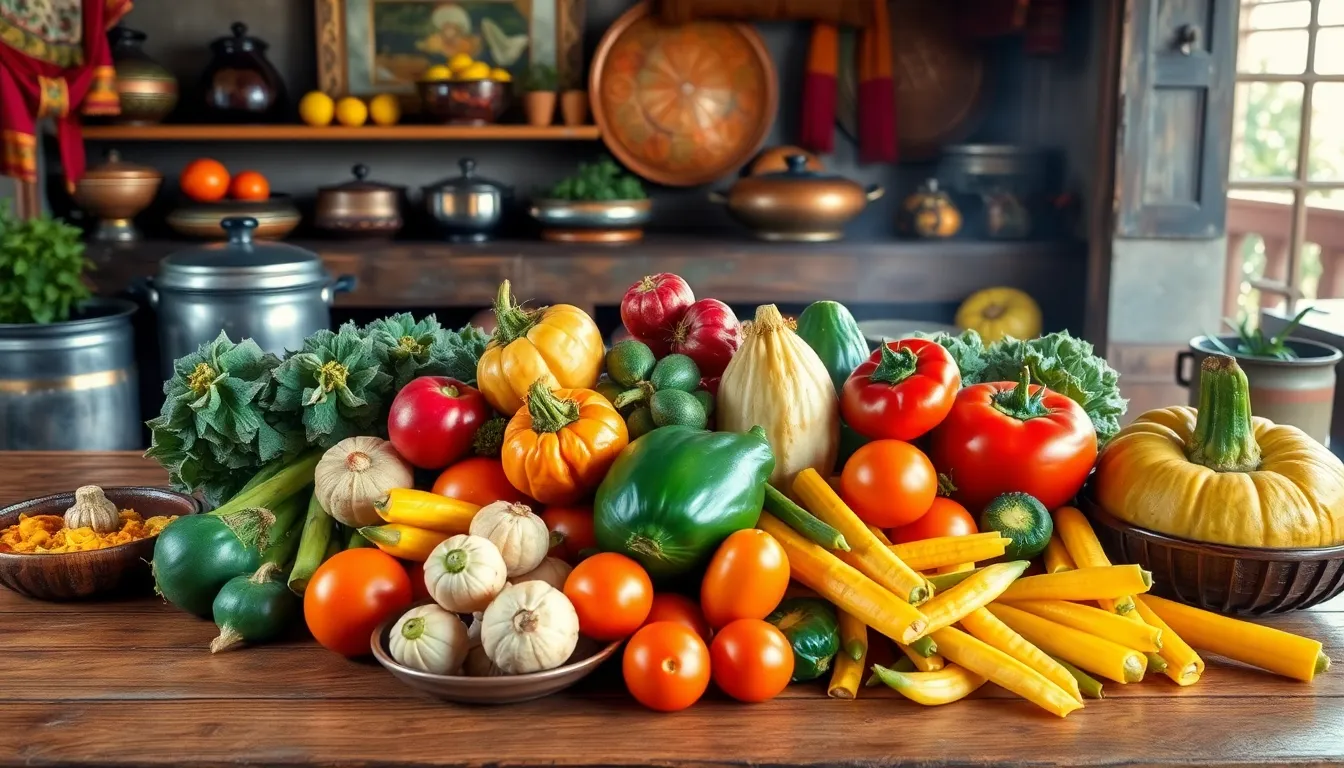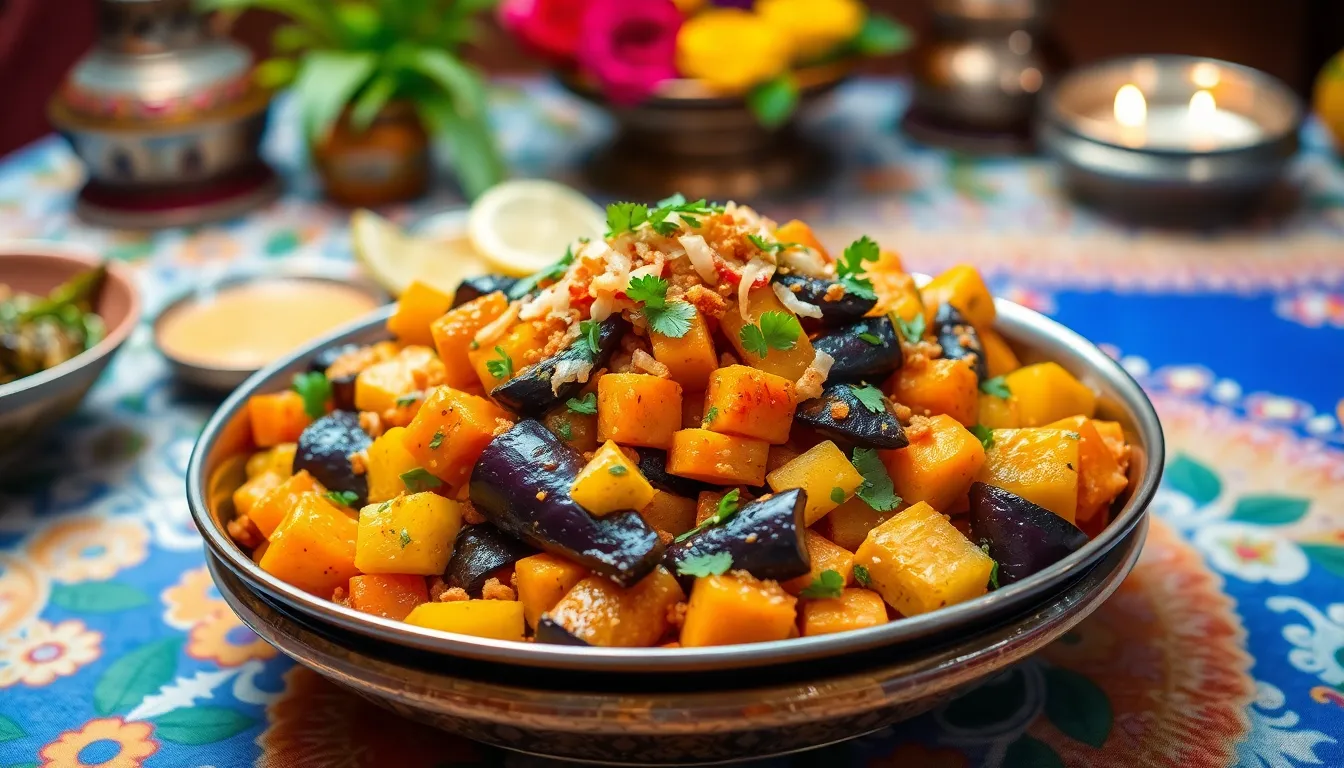Table of Contents
ToggleIn the vibrant world of South Indian cuisine, few dishes spark as much intrigue as vettakarikal. This culinary gem isn’t just a meal; it’s an experience that dances on the taste buds and makes even the most mundane day feel like a festival. Imagine a dish that combines fresh vegetables, aromatic spices, and a hint of nostalgia, all wrapped up in a hearty serving—sounds tempting, right?
Vettakarikal isn’t just about satisfying hunger; it’s about bringing people together over a shared love for flavor. Whether it’s a family gathering or a casual dinner with friends, this dish is sure to steal the spotlight. So grab a fork, or maybe just your hands, and dive into a world where every bite tells a story, and every flavor is a reason to smile.
Overview of Vettakarikal
Vettakarikal stands out as a signature dish in South Indian cuisine. Crafted primarily from a variety of fresh vegetables, each ingredient plays a role in enhancing the overall flavor profile. Cumin, mustard seeds, and an array of spices contribute to its aromatic essence.
Traditionally, this dish serves as a vibrant centerpiece during family gatherings and celebrations. In many households, the preparation involves communal participation, fostering a sense of togetherness. Sharing a meal featuring vettakarikal allows friends and families to connect, strengthening bonds over delicious food.
The cooking method highlights its versatility. Simmering vegetables with spices results in a rich, savory dish that appeals to various palates. Vegetarian-friendly, it caters to a broad audience, making it popular among health-conscious individuals. Guests often savor its comforting and nourishing qualities.
In addition to its culinary appeal, vettakarikal embodies cultural significance. Passed down through generations, recipes may vary regionally, each with unique twists. Thick gravies or lighter versions showcase the ingenuity of home cooks across South India.
Overall, this dish encapsulates the spirit of South Indian hospitality. The inviting aroma, combined with colorful presentation, enhances any mealtime experience. Vettakarikal promises to delight taste buds while celebrating the stories of those who prepare and enjoy it.
Historical Significance

Vettakarikal holds deep historical significance within South Indian cuisine. This dish reflects the agricultural heritage and diverse cultural influences of the region.
Origin and Use
Originating from traditional practices, vettakarikal incorporates seasonal vegetables native to South India. Communities often prepare this dish during festivals and special occasions, highlighting its importance. Preparation methods pass through generations, showcasing unique regional variations. These adaptations maintain cultural authenticity while allowing culinary creativity.
Cultural Importance
Cultural importance surrounds vettakarikal, as it represents unity and communal ties. Families gather to cook together, reinforcing relationships and sharing stories. This dish often graces festive tables, symbolizing abundance and hospitality. Rituals associated with its preparation contribute to spiritual and social gatherings, emphasizing its role in celebrations. Recognizing its cultural roots fosters appreciation for South India’s culinary legacy.
Types of Vettakarikal
Vettakarikal encompasses various styles and preparations that reflect local ingredients and traditions. Understanding these types highlights the dish’s diversity and appeal.
Materials Used
Ingredients vary widely depending on availability and personal preferences. Popular vegetables include eggplant, squash, and carrots. Fresh herbs are commonly used, especially curry leaves and coriander. Spices like cumin, mustard seeds, and turmeric enhance flavor profiles. Some variations incorporate lentils or chickpeas for additional protein. Each ingredient contributes to the overall taste, ensuring vibrant nutrition. Seasonal influences shape choices, making every preparation unique.
Design Variations
Presentation plays a significant role in serving vettakarikal. Commonly, cooks use large traditional serving dishes to showcase the colorful medley of vegetables. Some families opt for more compact servings, emphasizing individual portions for guests. Garnishes like fried onions and fresh herbs often elevate the dish visually. Regional styles influence design; for instance, some communities prefer simpler plating, while others use intricate arrangements. The serving style can communicate hospitality and cultural heritage, making every meal special.
Applications of Vettakarikal
Vettakarikal finds utility in various contexts, highlighting its importance beyond mere sustenance.
Agricultural Uses
Vettakarikal promotes agricultural diversity, utilizing a range of locally sourced vegetables. Farmers cultivate seasonal produce like eggplant, squash, and carrots specifically for this dish. Crop rotation practices benefit from the inclusion of these vegetables, enhancing soil fertility. Community gardens often feature these ingredients, fostering local food production and sustainability. Farmers’ markets showcase fresh, vibrant produce ideal for preparing vettakarikal. The connection between agriculture and this dish emphasizes the importance of local ecosystems. By supporting local farmers, consumers contribute to a circular economy while enjoying fresh ingredients.
Traditional Practices
Traditional practices surrounding vettakarikal reflect cultural heritage and communal bonds. Families often gather to prepare the dish, sharing stories and experiences during the cooking process. Festivals frequently feature vettakarikal, symbolizing abundance and hospitality. Recipe variations highlight regional differences, showcasing unique preparation methods and ingredient selections. The communal aspect fosters connections among those involved, reinforcing family ties and friendships. Rituals preceding its preparation, such as blessings or prayers, enhance its significance in social gatherings. This dish represents more than food; it embodies a shared cultural identity and unity among communities.
Vettakarikal stands as a testament to the rich culinary heritage of South India. Its vibrant flavors and communal preparation highlight the importance of togetherness in both cooking and sharing meals. This dish not only nourishes the body but also nourishes relationships, creating lasting memories among family and friends.
As it graces festive tables, vettakarikal symbolizes abundance and hospitality, inviting all to partake in its deliciousness. With each regional variation, it tells a unique story, celebrating local ingredients and traditions. The enduring appeal of vettakarikal ensures it remains a cherished part of cultural gatherings, reflecting the spirit of unity and the joy of shared experiences.




